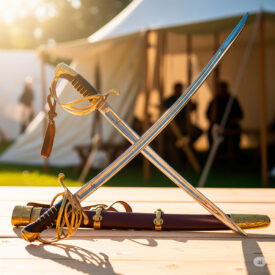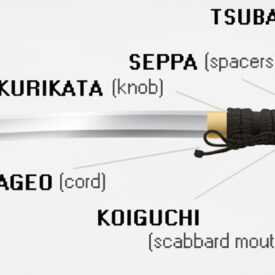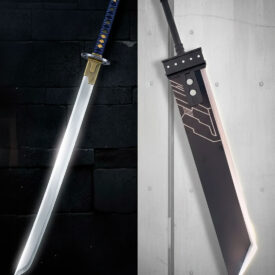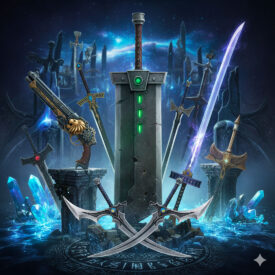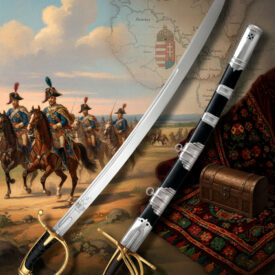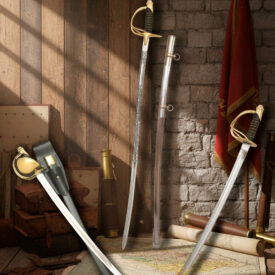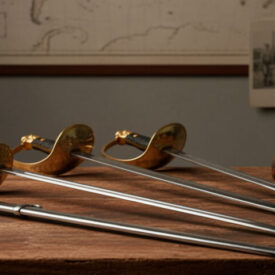On the edge of silence and chaos, a blade shines and defines a warrior. Michonne’s katana is not just a weapon: it is the extension of a story of survival, discipline, and transformation. In this article, you will discover how this saber emerged in The Walking Dead universe, what makes it distinct from a technical and symbolic point of view, how it has influenced pop culture, and what you should know if you are looking for a faithful and functional replica.
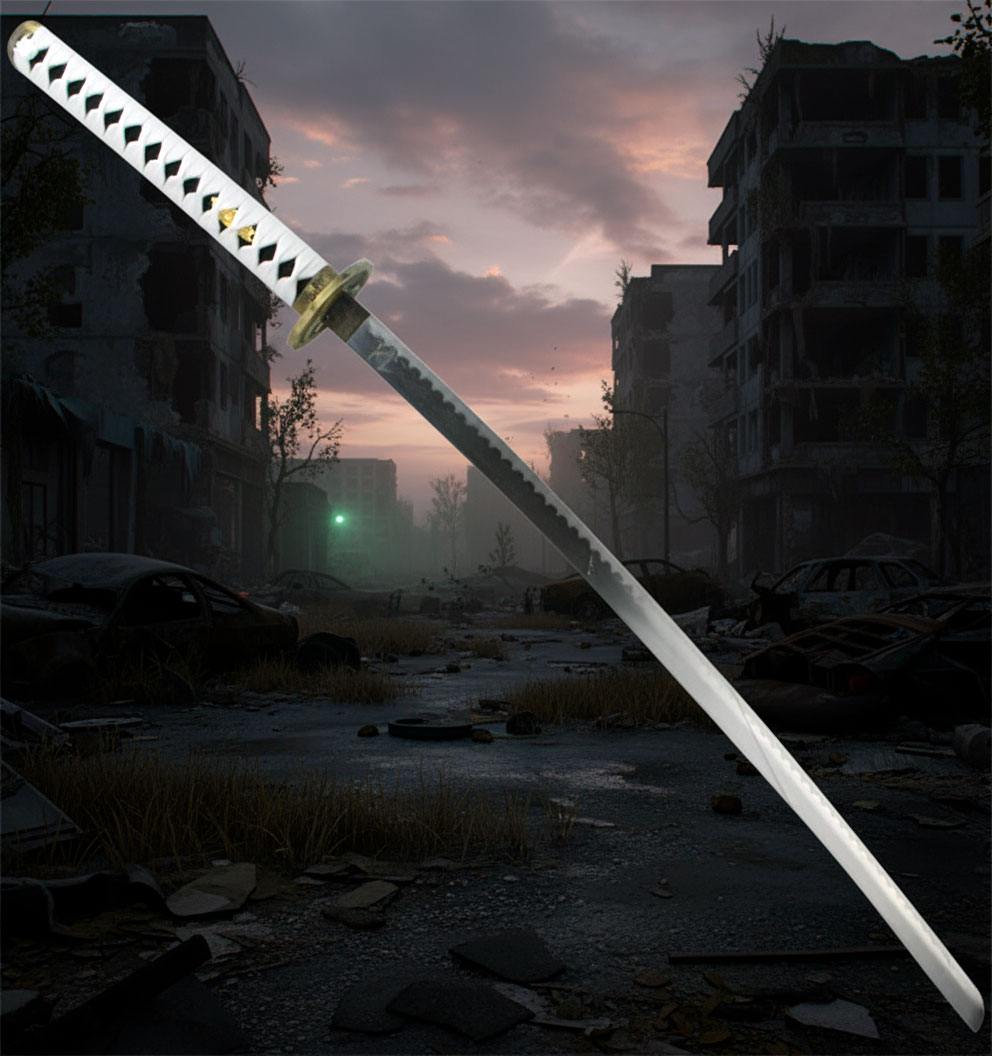
The narrative surrounding Michonne and her katana combines personal myth and lethal utility. Her fate is intertwined with the blade: an object that simultaneously protects, recalls, and defines the evolution of a character who went from being a solitary figure to a leader. We will break down each angle: origin in comics and series, design and characteristics, emotional symbology, how modern replicas are manufactured, and a clear chronology that places the katana in Michonne’s trajectory.
Throughout the text, you will find historical images linked to the weapon and relevant links naturally distributed to illustrate its presence in culture and the replica market.
Origin and first appearance in history
Michonne bursts into The Walking Dead mythology as a mysterious figure who masters the sword with chilly calm. In the television series, she appears at the end of the second season, introducing herself with two chained walkers by her side and a katana on her shoulder. In the graphic novels, the weapon’s story is nuanced: the sword appears as a find in a collector’s house or, in different versions, as an object that ends up joining Michonne’s destiny out of pure necessity.
That first moment is iconic: Michonne uses the katana to navigate among the dead undetected, a technique that combines stealth and efficiency. It is not a weapon that depends on ammunition or a spare part; it is a perfect tool for a world where noise can mean death.
Essential timeline of the katana and Michonne
The timeline helps to situate the character’s development and the katana’s importance in narrative milestones:
- Before the outbreak (according to some comic sources): Michonne lives a life marked by relationships and loss; the katana was not always part of her past, but the weapon symbolizes the vital turn she experiences after the disaster.
- End of season 2 (series): First television appearance of Michonne with the katana and chained walkers; an image that fixes her aesthetic and survival stratagem.
- Seasons 3-5: The katana consolidates as her main tool; Michonne develops her own combat style based on precision and movement.
- Key narrative moments: The sword is used in crucial confrontations against humans and walkers; it symbolizes both protection and emotional distance.
- Stages of personal evolution: As Michonne integrates with Rick, Carl, and the rest, her relationship with the katana changes: from an emotional shield, it transforms into a complement to an identity that learns to trust and love again.
Design and characteristics of Michonne’s katana
The best-known replica of Michonne’s katana is inspired by a traditional Japanese saber, adapted with details that make it recognizable at first glance. Below we break down its most relevant elements.
Components and materials
- Blade: Often forged from carbon steel or T10 steel in high-quality replicas, with a straight edge and geometry designed for cutting and thrusting.
- Saya (scabbard): Wood covered in brown leather, sometimes with white braiding; designed to carry the katana on the back ergonomically.
- Tsuka (handle): Wood wrapped in white tsuka-ito, which ensures a firm grip even in prolonged combat.
- Menuki and tsuba: Gold or silver details that add aesthetics; the tsuba in replicas usually features decorative motifs, such as a triquetra or stylized Celtic motifs.
Typical replica dimensions
Replicas true to the one Michonne uses usually respect real-size measurements:
| Attribute | Michonne’s Katana (replica) | Traditional Japanese Katana (example) |
|---|---|---|
| Blade length | 69 cm | 60–73 cm |
| Overall length | 102 cm | 90–105 cm |
| Blade thickness | 0.7 cm | 0.6–0.9 cm |
| Weight | 1.5 kg | 1.0–1.7 kg |
The combination of a robust blade and a long tsuka allows for two-handed handling, which facilitates precise and controlled cuts. The sword’s balance directly influences the feel of handling; quality replicas work on the balance point so that the sword responds naturally in trained hands.
Why Michonne chose the katana: practical and narrative reasons
In the context of the zombie apocalypse, the katana has obvious practical advantages:
- Silence: It produces no noise louder than a conversation, so it doesn’t attract hordes.
- Durability: It requires no ammunition or mechanisms that can break down.
- Versatility: It serves for both defense and everyday tasks.
- Easy maintenance: Basic cleaning and sharpening keep it operational.
Narratively, the katana functions as a symbolic extension of Michonne’s character: discipline, control, and lethal elegance that contrasts with the brutality of the environment. While other characters rely on noise and brute force, Michonne acts with precision and calculation.
The katana as a symbol: psychology and character evolution
The relationship between Michonne and her sword traces a powerful emotional arc. At first, the katana is a wall that protects her vulnerability. Over time, it becomes a tool that accompanies her reopening to the world. This phenomenon has three layers:
- Physical barrier: Defends against immediate threats.
- Emotional barrier: Allows maintaining distance to avoid further losses.
- Instrument of identity: When Michonne integrates into the group, the katana becomes part of her new social and moral identity.
That transition is what makes the katana a powerful symbol: it not only cuts flesh, but also the isolation and fear that chain a person after trauma.
Replicas: what to look for and how they are made
The interest in acquiring replicas of Michonne’s katana has grown with the series. But not all replicas are the same. Here are the keys to distinguishing a quality collectible piece:
- Blade material: T10 forged steel or carbon steel in functional replicas; stainless steel in decorative pieces.
- Construction: Proper forging and tempering for durability and strength.
- Finish: Hand-polished and detailed (tsuka-ito, menuki, tsuba) indicate greater craftsmanship.
- Balance and ergonomics: Try the grip or read reviews to check handling.
A quality replica not only imitates the aesthetics but also respects proportions, weight, and balance. If the purpose is display, many collectors opt for polished and protected models; if the idea is to practice martial techniques, it must be a functional and safe piece.
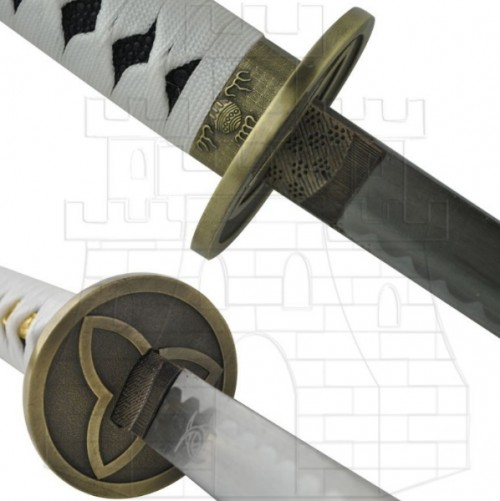
Maintenance and safety: caring for a functional replica
Owning a katana implies responsibility. Whether you possess it as a decorative item or use it for practice, these recommendations will help you keep it in good condition:
- Cleaning: After use, clean the blade with alcohol and wrap it in protective oil to prevent corrosion.
- Sharpening: Trust professionals to sharpen correctly and maintain the traditional edge angle.
- Storage: Avoid humidity; store the saya in a dry and well-ventilated place.
- Handling: Never point it at people and respect the legal and safety regulations in force in your country regarding bladed weapons.
Additionally, if you are going to practice cuts or kata, do so under supervision and in a controlled environment; functional replicas can be dangerous in inexperienced hands.
Comparison: Michonne’s katana vs. other iconic replicas
To better understand what distinguishes Michonne’s katana, we compare technical and aesthetic attributes with other replicas inspired by pop culture.
| Feature | Michonne Katana | Traditional Samurai Katana | Cultural Replica (series or video game) |
|---|---|---|---|
| Aesthetics | Simple, white braiding, golden menuki | Classic lines, lacquered saya | Sometimes ornamented, striking colors |
| Functionality | High (depending on forging quality) | High, historically designed for combat | Variable, many are decorative |
| Symbolic value | High due to narrative | Cultural and historical | Fandom and collecting |
Cultural impact and legacy
Michonne’s katana transcended the screen and became an icon of the female character in action fiction. Its presence boosted interest in faithful replicas and in the practice of disciplines that value technique over brute force. At conventions, cosplay inspired by Michonne is recurrent: the dreadlocks, vest, and katana form an instantly recognizable image.
Furthermore, the sword helped diversify the representation of heroines; Michonne doesn’t fit a classic mold: her weapon, demeanor, and combat ethic redefined expectations of how women should be portrayed in martial roles.
Commonly asked questions and clear answers
When researching Michonne’s katana, recurring doubts arise. Here are direct and practical answers:
- Is it a real katana? The versions shown in the series are designed as functional replicas for the camera; commercial replicas can be decorative or forged for real use.
- Do I need a license? It depends on local legislation: some regions regulate bladed weapons by length or use; always inform yourself before acquiring or carrying a replica.
- Can it be practiced with? Yes, if the replica is functional and appropriate safety and training measures are taken.
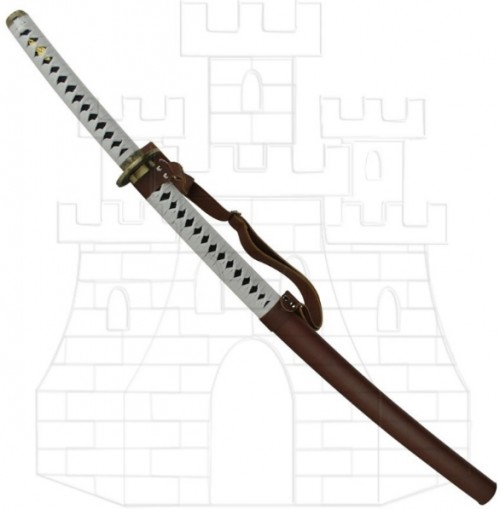
How to choose the right replica according to your objective
Your choice should be based on the intended use:
- Decoration and display: Opt for polished finishes and corrosion-resistant materials; aesthetics are key.
- Martial practice or cutting: Look for high-quality steel forging, good tempering, and proven balance.
- Collecting: Prefer pieces with authenticity documentation and handmade details.
If you are going to compare models, pay attention to the type of steel, the tempering process, the quality of the handle’s braiding, and user reviews from those who have tried handling it.
Michonne’s katana maintains its aura because it combines history, design, and a clear narrative function. It’s not just the blade: it’s the story it tells about loss, resilience, and the choice to live with dignity even when the world seems to have lost it.
In the end, owning or studying a replica of this katana means connecting with a broader narrative: the transformation of a person who found in discipline and precision a way to rewrite herself. That is the true strength of the icon: it inspires as much as it intimidates.
VIEW MICHONNE THE WALKING DEAD KATANA | VIEW MORE THE WALKING DEAD KATANAS

